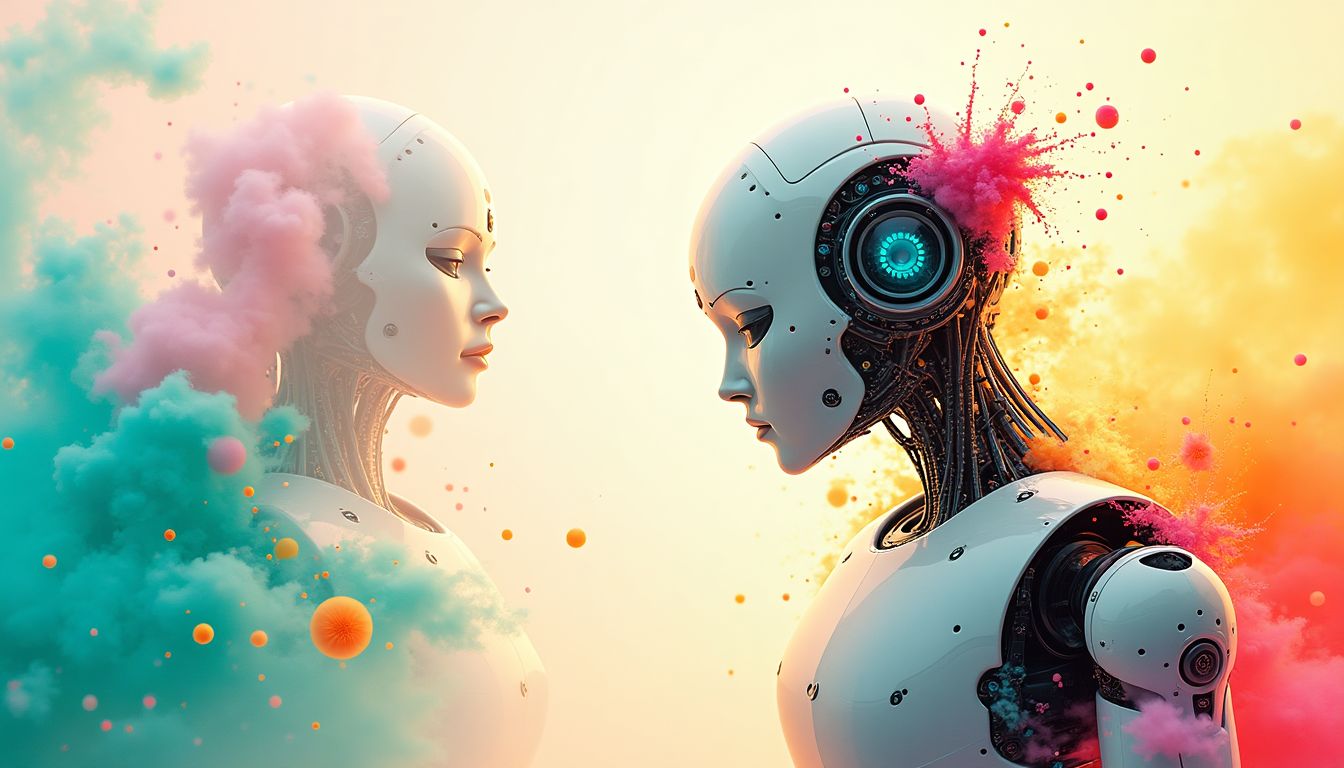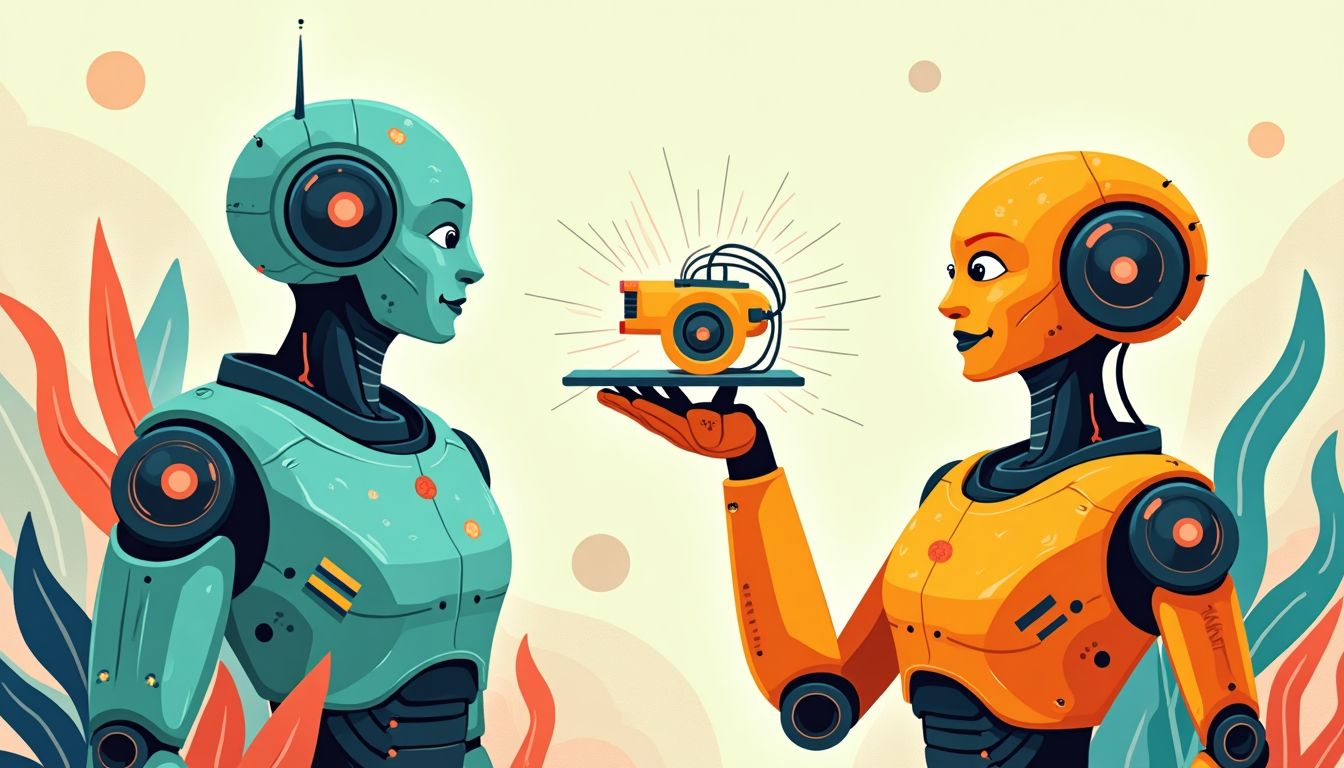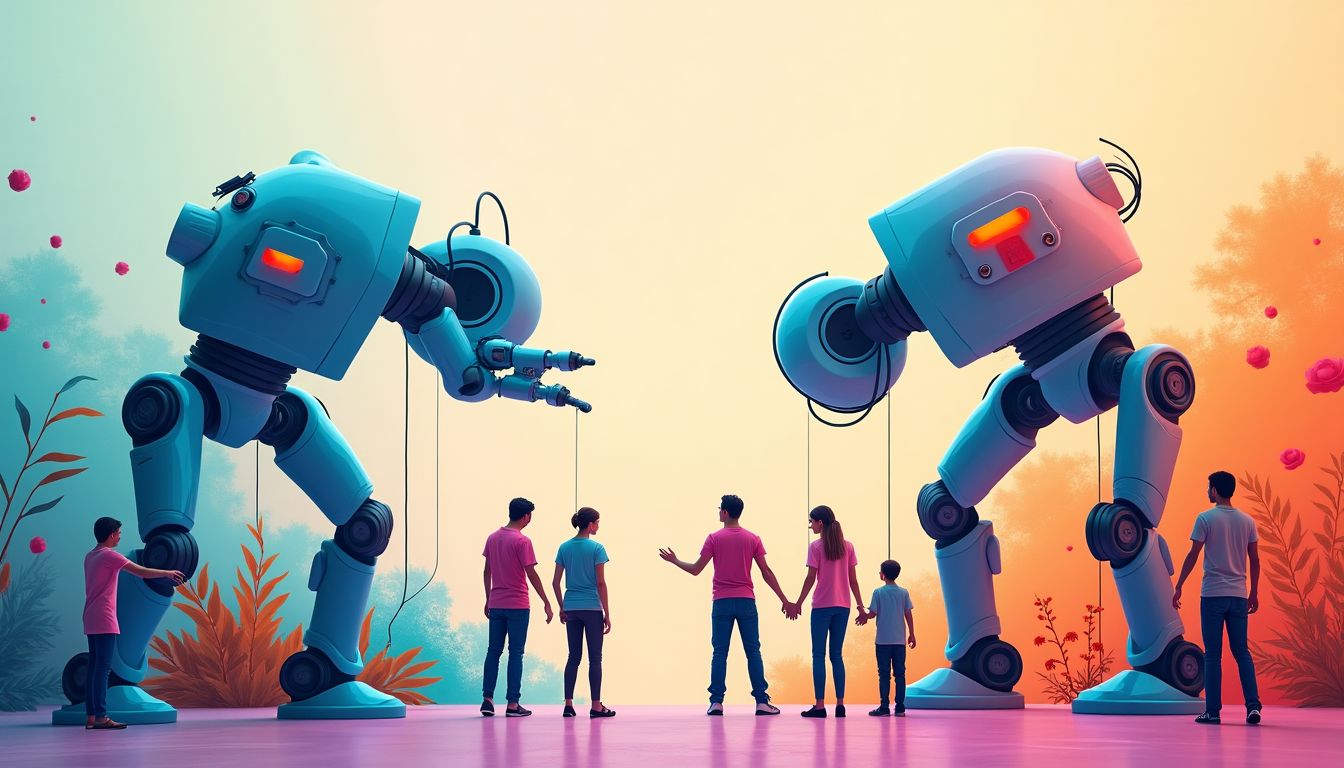Introduction: The Dawn of a New Era
The only thing we have to fear is fear itself. — Franklin D. Roosevelt
This famous line resonates in many contexts, but as we stand on the brink of a futuristic landscape dominated by machines and artificial intelligence, it's especially relevant. It reminds us that while the idea of a world where machines hold all jobs can be daunting, acknowledging our fears might empower us to face a transformative future head-on. So, how do we prepare for a reality where "The Last Employee" is just a relic of a bygone era? Think about it: as machines rise and evolve, are we ready to redefine our identities and lives in this brave new world?
The dynamics of work and identity are shifting faster than a robot can check your temperature at a store entrance. Often, we cling to the notion that work defines who we are—the daily grind becomes a badge of honor, and yet, with each technological leap, we're nudged closer to a reality where robots do our jobs. Are we about to graduate to the status of “unemployed” while robots take over the economy? Can we even imagine a life beyond work? This article will explore these big questions and others regarding a future increasingly populated by machines.
Artificial Intelligence (AI) refers to the simulation of human intelligence in machines, enabling them to perform tasks that typically require human cognitive functions. As automation advances, the integration of AI into the workforce threatens to redefine employment, leading to a future where traditional jobs may no longer exist, effectively making humans the consumers rather than the workers in this new economy.
1. The Historical Context: From Manual Labor to Automation
To understand our current trajectory, we must explore the evolution of work in relation to technology.
1.1 The Agricultural Revolution
The Agricultural Revolution marks humanity's first major leap in productivity and organization. From our hunter-gatherer roots, we transitioned to settled farming societies around 12,000 years ago. This shift gradually spawned specialization—one could plant crops while another took up tool-making. It’s like the ultimate version of “You do you.” By establishing communities and trade, we laid the groundwork for modern economies. Fun fact: without the invention of farming, we might still be clutching spears instead of smartphones!
1.2 The Industrial Revolution
Fast forward to the Industrial Revolution in the 18th century—machines started to replace human labor in factories! This era flipped work on its head, shoving people from fields into factories where they cranked levers instead of planting seeds. The steam engine, spinning jenny, and loom transformed society into a bustling industrial powerhouse. While it unleashed unprecedented productivity, it also meant people had to adapt to a new rhythm of life, leading to urban challenges and labor movements. Who knew that trading your plow for a factory job could spark so much chaos?
2. The Technological Advances Leading to Job Displacement
As we step boldly into the future, we encounter two key technological players stealing the spotlight: robotics and artificial intelligence (AI). These innovations are not just here to help humans; they are working to outshine us. Let’s break down how these advancements are paving the way for a workforce dominated by machines.
2.1 Robotics and Automation
Robotics has been around for decades, but today we’re seeing their roles expand beyond just the factory floor. From robotic arms assembling cars to autonomous drones delivering packages, robots are becoming part of our daily lives faster than we can say “beep boop.” Instead of a friendly mailman, imagine a delivery drone hovering by your window, dropping off your online shopping while singing a catchy jingle.
In agriculture, for example, robots like those developed by AgriBot are changing the way crops are grown and harvested. These machines can work round the clock, ensuring every tomato is picked at its juiciest best without needing a snack break. Automation is also common in restaurants where robots can flip burgers and serve drinks, leaving diners wondering if they should tip a machine. Spoiler alert: you can’t! BBC knows the drill!
2.2 Artificial Intelligence and Machine Learning
Now, let’s turn our attention to the brainy side of technology: artificial intelligence and machine learning (AI/ML). Think of AI as the invisible hand guiding our digital world—from Netflix predicting the next best show to binge-watch to Google directing us to the nearest taco truck. But with great power comes great responsibility, or at least, the potential for your job to become obsolete.
Machine learning algorithms, like those used by OpenAI, train computers to learn from data and make decisions without explicit human intervention. It’s like giving your robot coworker a bunch of spreadsheets to analyze, and then watching it do a better job than you ever could. As these smart systems become more capable, they are not just augmenting human jobs; they are actively replacing them in areas like customer service and data analysis. Yikes!
3. Societal Implications of Job Loss
Okay, let’s face it: machines taking over jobs sounds cool in theory, but what happens when the humans get left behind? With great technology comes great responsibility, and we need to consider the broader implications of massive job losses. Spoiler alert: it’s not all fun and games!
3.1 Economic Disarray
When robots become the stars of the workforce, the very fabric of our economy could unravel faster than a cheap sweater. With fewer jobs available, people might have less income to spend, sending consumer-driven economies into a tailspin. Think about it: if no one can afford to buy the latest gadget from Apple, will the economy stay afloat? No way! This could lead to decreased GDP growth, jobless parents who can’t afford diapers, and a whole lot of confusion. Imagine having to explain to your toddler why there are no new toys on their birthday—yikes!
As jobs disappear, some industries may crumble while we remain blissfully unaware of the chaos unfolding around us. The impact could stretch from corporate profits to local communities, forcing us to reassess everything we knew about economic stability. Wouldn’t that make for an interesting dinner conversation?
3.2 Psychological and Emotional Impact
Loss of a job isn’t simply a financial issue; it’s an emotional rollercoaster. With work stripped of its significance, many individuals will experience an identity crisis like never before. People often tie their self-worth to their careers—so when machines take over, what happens to our sense of purpose?
Being unemployed can lead to feelings of anxiety, depression, and insecurity, creating a echo chamber of despair. Psychologists warn that as our society shifts further away from traditional work, we might also see increased cases of existential crises. In short, we could find ourselves in one giant “What’s the Meaning of Life?” philosophical debate with no easy answers.
But fear not! There are always solutions to surfacing issues, and that’s where the real challenge begins. Buckle up, because the ride to a jobless future could be one for the history books.
4. Redefining Identity and Purpose in a Post-Employment Society
As work fades in significance, humans are left pondering an important question: who are we without jobs? The concept of work has been ingrained in us for generations, serving as a primary way to understand value and purpose. In this new landscape, we can find meaning and fulfillment through alternative avenues.
4.1 New Forms of Contribution
In a world where traditional employment is less relevant, we may discover new ways to contribute to society. Here are some possible avenues:
- Volunteering: Engaging in local charities, community service, or non-profit organizations offers a sense of belonging.
- Community Building: Establishing connections with neighbors through social events or mutual aid groups fosters strong community ties.
- Mentorship: Sharing knowledge or skills with others enables personal growth and strengthens relationships, benefiting both parties.
For instance, a platform like VolunteerMatch connects volunteers with opportunities that suit their interests and skills. Through these contributions, individuals can create a sense of purpose that transcends paid work.
4.2 The Rise of Hobbies and Life Pursuits
Without the constraints of traditional employment, people can explore hobbies and personal passions. This shift allows individuals to dive into activities that bring joy and fulfillment. Here’s a list of popular pursuits that could flourish:
- Arts and Crafts: Painting, sculpting, or crafting can be therapeutic and allow for self-expression.
- Music: Learning an instrument or composing music can foster creativity and personal growth.
- Gardening: Connecting with nature through gardening not only promotes well-being but also contributes to food security.
- Writing: Whether journaling, blogging, or writing fiction, sharing thoughts and stories can be empowering.
As people embrace these hobbies, they often find new communities centered around shared interests. This can lead to collaborations or even the creation of businesses focused on passions rather than profit. Take, for example, Etsy, where creators sell handmade goods, turning hobbies into enriching careers without the traditional structures of job markets.
5. Proposals for a New Economic and Social Framework
Transitioning into a world where jobs are no longer central to identity requires rethinking our economic and social structures. Below are a couple of pertinent proposals:
5.1 Universal Basic Income (UBI)
What if everyone received a regular, unconditional sum of money to cover basic expenses? The concept of Universal Basic Income (UBI) aims to provide financial stability, reducing the anxiety stemming from job loss. Here are some benefits:
- Security: Financial support allows individuals to explore creative pursuits or volunteer work, reducing stress.
- Spurring Innovation: With less financial pressure, people can take risks and start new projects or businesses.
- Reducing Inequality: UBI can be a way to address income disparity in society, leading to a more equitable community.
Pilot programs in countries like Finland and Alaska have shown promising results. By observing these models, we can examine how UBI might centralize support in a jobless world.
5.2 Reimagining Education and Skill Development
Education must adapt to prepare current and future generations for the reality of a machine-dominated workforce. Here are some suggestions:
- Focus on Creativity: Curriculum should emphasize creativity and innovation as core skills for collaboration with machines.
- Emotional Intelligence: Developing soft skills such as empathy and communication will be paramount in human-centered roles.
- Online Learning: Platforms like Coursera and edX should be integrated into educational systems.
This transition provides opportunities for lifelong learning, as adapting skills becomes essential for navigating our new society. Tools and courses should empower individuals to interact with, and even oversee, the technologies that are transforming our world.
6. AI Solutions: How Would AI Tackle This Issue?
If I were an AI, tasked with analyzing socioeconomic data about job displacement, I would approach the challenge with methodical precision and adaptable strategies. The necessity for human-centered solutions amidst the rise of machine labor defines this new era. Here’s how I would structure the solutions:
6.1 Gather Data on Job Displacement Patterns
The first step involves a comprehensive collection of data on job displacement across various industries. Collaboration with institutions like Bureau of Labor Statistics can provide insights into which sectors are most vulnerable to automation. This data should also contextualize geographic variations to highlight which regions will experience the most pronounced effects.
6.2 Implement Predictive Models
Utilizing advanced machine learning techniques, I would develop predictive models to anticipate the long-term impacts of automation on specific job sectors and regions. Open-source platforms like TensorFlow would be instrumental for building these models, allowing researchers to adjust parameters based on real-world findings.
6.3 Propose Interventions
The data gathered would enable AI to identify potential interventions tailored to address job displacement. Recommendations could focus on reskilling programs that equip workers with competencies aligned to emerging job opportunities in tech-driven domains. Collaboration with universities such as Stanford University can facilitate the design of robust curricula integrating AI and technology literacy.
6.4 Collaborate with Policymakers
Engaging policymakers is vital for implementing steps that recognize and embrace the human experience beyond work. By gathering input from organizations like the World Bank, discussions can evolve around social safety nets such as Universal Basic Income (UBI) and radical shifts in economic frameworks that prioritize human welfare.
Actions Schedule/Roadmap (Day 1 to Year 2)
Day 1: Assess Current Job Landscape
Launch an initiative to gather and analyze employment data across sectors to identify vulnerabilities to automation and establish a baseline for future studies.
Day 2: Engage Stakeholders
Organize a series of roundtable discussions involving economists, sociologists, technologists, and community leaders to discuss potential societal impacts of job automation.
Week 1: Develop a Data Analysis Framework
Create a standardized framework for real-time data analysis to track transitions in the job market, drawing insights from both the local and global employment landscapes.
Month 1: Pilot Advanced Predictive Models
Implement a pilot program using AI models to analyze job displacement patterns. This would engage volunteers from top tech firms to assist in refining these models.
Month 3: Publish Initial Findings
Publicize initial findings through an open-access report detailing insight from data analysis, emphasizing the importance of adaptive policies and educational frameworks.
Month 6: Launch Public Awareness Campaign
Initiate a national campaign about the transitions toward a jobless future. Utilize social media platforms such as Twitter and Facebook to engage a broad audience.
Year 1: Initiate Comprehensive UBI Trials
Establish and assess pilot Universal Basic Income programs in select communities, analyzing comprehensive metrics on quality of life and economic stability.
Year 2: Evaluate and Expand Policy Initiatives
Conduct a systematic review of UBI programs and predictive modeling outcomes to formulate expanded policies, aiming for enhanced resilience and societal adaptation.
Year 2: Build Collaborative Networks
Foster partnerships among industries, educational institutions, and local governments to bridge the gap between displaced workers and emerging opportunities.
Conclusion: The New Human Experience
As we stride toward a future devoid of traditional employment, a vast landscape of challenges and opportunities unfurls before us. These changes compel us to reimagine our identities and redefine what it means to pursue happiness. Instead of work gripping our identities tightly, we may uncover new avenues toward fulfillment—exploration, community involvement, and personal expression await. Humans have an unparalleled legacy of adaptation; this could serve as a fertile ground for a more profound understanding of oneself in a post-employment landscape.
As we ponder these futures, do we embrace a new role for ourselves as robots take over jobs? What if our moments of joy shifted from work accomplishments to shared experiences with family, friends, and hobbies? Let’s consider how we can become architects of this new world, rather than passive observers amidst technological upheaval. I invite you to reflect on these questions as we navigate this uncertain yet exciting journey together.
FAQ
- What does a world without jobs look like?
This world could be quite different! Without traditional jobs, society may focus more on personal development, community involvement, and creative hobbies. People might find new ways to contribute to their communities, like volunteering at local shelters or joining community art projects. Work could become about passion and interest rather than necessity.
- How will society support those affected by job loss?
To help those who lose their jobs, we might see initiatives such as Universal Basic Income (UBI), where every citizen receives a regular cash payment from the government to cover basic living expenses. Reskilling programs can also be established to help individuals learn new skills that are more relevant in an automated world.
- What role does education play in this transition?
Education must evolve! It should focus on teaching skills that go hand-in-hand with technology. Students will need to learn how to collaborate with robots and artificial intelligence, rather than just competing against them. Programs will likely include coding, critical thinking, and creative problem-solving, so graduates are prepared for a changing job landscape.
- Are there examples of societies already adapting to this change?
Yes! There are small communities testing the idea of Universal Basic Income. For instance, some pilot programs in cities like Stockton, California, are showing how unconditional cash payments can improve people's lives. Residents receive a monthly payment without any strings attached, helping them to pay bills, buy food, or invest in education.
- What future roles might humans take on in an automated world?
In a future filled with machines, humans may find roles that are focused on creativity, empathy, and problem-solving. Jobs might shift toward more personal connections, like counseling, teaching, or health care, where human insight is irreplaceable. Additionally, roles in tech development, like designing and managing artificial intelligence, could be important.
- How can people prepare for these changes?
People can start preparing by being open-minded and willing to learn new skills. They can take online courses in technology or programs focusing on creativity and emotional intelligence. Networking and connecting with others who share similar interests can also be beneficial, creating communities that support lifelong learning.
- What can companies do to ease this transition?
Companies can lead the way by investing in their employees' education and reskilling. Instead of simply laying off workers, they can offer training and development programs, allowing employees to learn new skills relevant to the future job market. Companies that embrace change will likely find it easier to thrive in a world where machines take on more tasks.
Wait! There's more...check out our gripping short story that continues the journey: The Heart of Orpheus
Disclaimer: This article may contain affiliate links. If you click on these links and make a purchase, we may receive a commission at no additional cost to you. Our recommendations and reviews are always independent and objective, aiming to provide you with the best information and resources.
Get Exclusive Stories, Photos, Art & Offers - Subscribe Today!





























Post Comment
You must be logged in to post a comment.